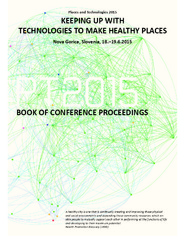Приказ основних података о документу
“Vertical” city
| dc.contributor | Fikfak, Alenka | |
| dc.contributor | Vaništa Lazarević, Eva | |
| dc.contributor | Fikfak, Nataša | |
| dc.contributor | Vukmirović, Milena | |
| dc.contributor | Gabrijelčič, Peter | |
| dc.creator | Lojaničić, Damjana | |
| dc.date.accessioned | 2020-05-06T18:58:53Z | |
| dc.date.available | 2020-05-06T18:58:53Z | |
| dc.date.issued | 2015 | |
| dc.identifier.isbn | 978-961-6823-68-5 | |
| dc.identifier.uri | https://raf.arh.bg.ac.rs/handle/123456789/656 | |
| dc.description.abstract | High-density cities are a regular occurrence today. The growth of urban population will not stop. As the available space is a constant and population is growing and growing, the question of quality of life “in this issue” and whether it is possible to determine the (only) optimum population capacity of given space arises. Cities high population density is forced to use every inch of available land. However, the question is how the given land is to be occupied and with what architecture. One of the consequences of poor design of high-density cities is their spatial congestion. This in itself is not a fact. It is rather an interpretation of space. As a consequence it creates a sense of stress. Spatial congestion is delt with open public green spaces, whose presence positively impacts on human health. The problem is subjecting the land to a solely “green” purpose. If we look at the volume of a given area (not just the surface), the solution appears in the form of vertical designs. By which it is implied that the greenery and functions should be designed vertically. The result of “bad” overpopulated city is a large number of cars. If every household owns a car, the produced negative effect is reflected through several aspects: environmental pollution, economically profitable, endangered human health. The negative effects are manifested on the principles of sustainability. We should strive to reduce the need for individual vehicles and actualization of urban public transport, especially cycling and pedestrian movement. Difficulties of realisation of this concept are the fact that these cities are characterized by large distances. Designing vertically the distance lessens, horizontally at least (examples: Singapore, Hong Kong…). “Good” high-density cities are “healthy” cities with a healthy population. Sustainability is no longer recommended, but obligations. | en |
| dc.language.iso | en | sr |
| dc.publisher | Ljubljana : Faculty of Architecture | sr |
| dc.rights | openAccess | sr |
| dc.source | Keeping up with technologies to make healthy places : book of conference proceedings / [2nd International Academic Conference] Places and Technologies 2015, Nova Gorica, Slovenia | sr |
| dc.subject | Density | sr |
| dc.subject | Vertical | sr |
| dc.subject | Design | sr |
| dc.subject | Health | sr |
| dc.subject | Sustainability | sr |
| dc.title | “Vertical” city | en |
| dc.type | conferenceObject | sr |
| dc.rights.license | ARR | sr |
| dcterms.abstract | Лојаничић, Дамјана; | |
| dc.citation.spage | 39 | |
| dc.citation.epage | 44 | |
| dc.identifier.fulltext | https://raf.arh.bg.ac.rs/bitstream/id/1778/Book_of_Proceedings_PT2015LojanicicD.pdf | |
| dc.identifier.rcub | https://hdl.handle.net/21.15107/rcub_raf_656 | |
| dc.type.version | publishedVersion | sr |

